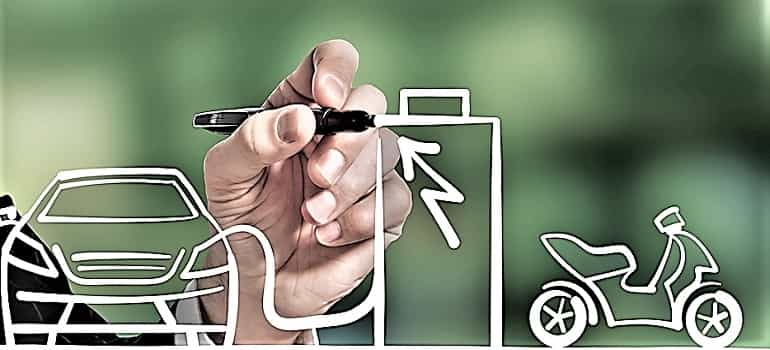India Energy Storage Alliance (IESA), released its 3rd annual edition of the “2021 India Electric Vehicle and Component Market Overview Report 2021-2030”. In terms of revenue (INR Crore) and GWh potential, the research examines the current market trend and prediction for electric vehicles (EV), as well as the need for EV batteries by various EV segments.
The report includes a thorough chapter on the analysis of EV policies at the central and state levels. It also includes a section on the growth of the EV ancillary market in India.
This chapter covers important components like battery management systems, motors, controllers, and power electronics, among others, and it provides a competitive analysis of the market’s major players and the supply chain for important components.
According to the survey, the EV industry in India experienced one of the quickest recoveries from the pandemic-induced slowdown in 2020. The e-2Ws (50 percent market share), followed by the lowspeed e-3Ws, accounted for most of the 4,67,000+ annual EV sales in India in 2021; however, other segments also showed notable increase over the course of the year. The research report routes three different market projection scenarios for the ensuing decade.
According to the report’s Business as Usual (BAU) scenario, the Indian EV market would expand at a CAGR of 49% between 2021 and 2030 and is predicted to reach annual sales of 17 million units by that time, with almost 15 million of those projected to be electric two-wheelers.
Between 2021 and 2030, the yearly battery demand is anticipated to increase at a CAGR of 41%, reaching 142 GWh. The market is of 6.5 GWh, just like in 2021. According to the report, the Indian EV market is anticipated to grow quickly after 2024–2025 as the initial costs of EVs are predicted to be comparable to those of ICE vehicles because to falling battery prices, advancements in EV technology, domestic production, sand economies of scale. Lead-acid batteries continued to dominate the Indian EV ecosystem in 2021, accounting for 81% of the market; this is due to the high demand for e-rickshaws.
The market share of lithium-ion batteries has been steadily growing, and in 2021, for the first time, the demand for these batteries exceeded the 1 GWh threshold. Additionally, among lithium-ion chemistries, Lithium Iron Phosphate (LFP) is chosen option for e-3Ws and e-4Ws whereas Nickel Manganese Cobalt (NMC) is the preferred option for e2W and e-buses. The FAME II programme, which has been extended to 2024, was launched by the government to look into ways to make EVs cheaper and attractive to the end-users. By December 2021, the scheme has benefited more than 1.8 million automobiles.
FAME Incentives for e-2Ws have also been raised from INR 10,000/kWh to INR 15,000/kWh in a recent policy revision. Many states have announced their own EV policies that are unique to each state.
Additionally, the Central Government issued directives and policies geared on removing obstacles and promoting progress. Along with securing supply through the introduction of numerous PLI programmes for advanced chemistry cell (ACC) battery storage, automobiles and auto components, and semiconductors, the government has also been working to increase demand.
Local manufacturers are also being protected through the imposition of basic customs duty on imports in accordance with the Phased Manufacturing Programme for EVs.
According to the report, the main factors propelling the EV market’s expansion in the current decade will be (1) rising consumer awareness; (2) rising fuel prices; (3) commitments from fleet aggregators and corporations; (4) entry of new players; (5) advancements in EV technology; (5) continued subsidy support from both the Central and State governments; and (6) anticipated implementation of strict emission standards (CAFÉ norms from 2022).


